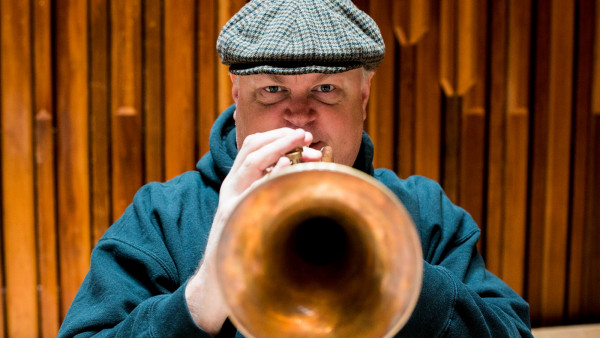New Yorkers salute groundbreaking night with glittering eloquence
New York’s Jazz at Lincoln Center Orchestra amble on to the Barbican’s stage every couple of years and are always greeted by delighted audiences as if they were long-lost relatives bearing gifts. Tuesday’s curtain-raiser to the jazz orchestra’s current residency was a typically graceful blend of swing grooves that ticked over like an immense and perfectly balanced engine, ensemble parts played with languid rigour, and concise improv that both embellishes compositions and cherishes their shapes. The night’s theme was the tightly drilled but expansive 30s big-band jazz of Benny Goodman – the most ecstatically popular western dance phenomenon until the coming of rock’n’roll – which those long-honed JLCO virtues could hardly have fitted better.
The band’s occasional tendency towards respectful reserve was jolted by some pithy input from four local guests – vibraphonist Jim Hart, clarinettists Adrian Cox and Giacomo Smith, and vocalist Clare Teal – while its famous founder, Wynton Marsalis, uncharacteristically took a back seat, keeping his effortlessly eloquent trumpet solos to a minimum and not speaking a word.
The performance was an 80th anniversary tune-by-tune reprise of a groundbreaking 1938 Carnegie Hall concert by the Goodman orchestra and guests from the Duke Ellington and Count Basie bands. The importance of that night – musically, socially and politically – put this JLCO tribute into the Barbican’s current Art of Change season. Carnegie Hall had been an impregnable bastion of European classical music until 16 January 1938, and racially integrated ensembles were unknown there. When Goodman’s band, with its African-American vibraphonist Lionel Hampton and pianist Teddy Wilson, jammed on stage with Ellington’s and Basie’s black sidemen and when the resulting recording sold a million, white America got a sharp lesson in what jazz was, who was playing it, and why.
The Lincoln Center band’s purring swing and leader Victor Goines’ silky clarinet sound ushered in the opening Don’t Be That Way, and British clarinet guest Adrian Cox mixed his piercing attack with the warmth of the JLCO horns on Sometimes I’m Happy. Vibraphonist Jim Hart arrived for a racing I Got Rhythm, representing Hampton’s dynamic presence in a glittering display of flying runs and fast four-mallet chordwork, often cajoled by the orchestra’s fine pianist, Dan Nimmer. JLCO reedman Ted Nash brought Benny Goodman’s signature liquid phrasing to a delectable clarinet account of The Man I Love, and young London-based clarinettist Giacomo Smith joined for snappy visits to One O’Clock Jump and China Boy.
Wynton Marsalis stamped his presence on the show early in the second half, uncorking an astonishing trumpet solo of muted voicelike phrases, upper-register squeals and rhythmically whippy momentum on Life Goes to a Party. The Carnegie Hall concert’s revisits to early New Orleans music were faithfully captured by both the visitors and the guests, tenor saxophonist Sherman Irby played some exquisitely sleazy blues, and singer Clare Teal brought an uncluttered, casually swinging clarity to Bei Mir Bist du Schön. Inevitably, they all wound up with a stomping jam on the swing classic Sing, Sing, Sing – full of crisp solos from the reeds and brass, but most fittingly from the clarinettists. Goines, Nash, Cox and Smith swapped figures with palpably growing elation in a finale that finally paid tribute to the Carnegie Hall concert’s legendary spontaneity as well as its meticulous Goodmanesque discipline.
In residency at the Barbican Centre, London, until 1 March.
by John Fordham
Source: The Guardian

